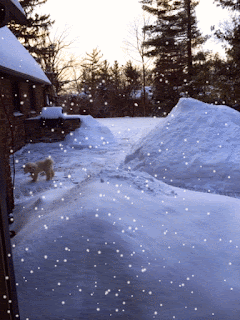
 My husband claims it's the day the Brits burn their Christmas boxes. Makes sense, but likely isn't the case. It is a fine excuse for a winter bonfire, and far safer than stuffing emptied cartons into the parlor fireplace.
My husband claims it's the day the Brits burn their Christmas boxes. Makes sense, but likely isn't the case. It is a fine excuse for a winter bonfire, and far safer than stuffing emptied cartons into the parlor fireplace.Never managing to locate a unified explanation as to why the day following Christmas is coined "Boxing Day," it seems that December 26th is a day of "fill in your blank" celebration--sorely needed after the stress and bustle of the preceding high holiday.
In England it generally involves horses and fox hunting, but as most urban dwellers no longer have steeds, it has evolved to a day of rest (and maybe some bloodsport shopping) after a
robust celebration of Christmas.
In Ireland and Wales folks honor the feast day of the first Christian martyr St. Stephen, a teacher, historian and orator, who perished in a painful manner.
Legend has it that the term "boxing" evolved from the practice of sending home servants the day following Christmas laden with boxes of food and drink for a hard earned post Christmas celebration. Back in the Downton days, the help had to work on the 25th so the gentry could enjoy the holiday undistracted by the chores of living.
 In the Mitten, the day following Christmas is best spent outdoors, taking in the wonder and beauty of winter. After a deep snow, and protracted cold temperatures, a sudden warm snap produced translucent ponds and ethereal fog.
In the Mitten, the day following Christmas is best spent outdoors, taking in the wonder and beauty of winter. After a deep snow, and protracted cold temperatures, a sudden warm snap produced translucent ponds and ethereal fog. Thus we have the mist in common.
 The evergreen boughs and dried hydrangea heads in window boxes and stone containers still cling to a light icing of snow. Dried grasses and tall perennials glow golden in the moisture rich air. Deep burgundy and bronzed stemmed shrubs balance the evergreens and darkly moist green grass emerging along the frilled edge of the snow covered lawn.
The evergreen boughs and dried hydrangea heads in window boxes and stone containers still cling to a light icing of snow. Dried grasses and tall perennials glow golden in the moisture rich air. Deep burgundy and bronzed stemmed shrubs balance the evergreens and darkly moist green grass emerging along the frilled edge of the snow covered lawn.The sun never reared her pretty head, but cool nature had her own warmth.
 What makes this muddy time of year so magical for me? I can't get enough of the moist coldness of the garden and the restful
What makes this muddy time of year so magical for me? I can't get enough of the moist coldness of the garden and the restful muted colors of early winter.
Not a horse in sight, but plenty of deer tracks in the receding snow.
A sort of "outside the box" day, shoring up for the upcoming new year.. Best spent taking in fresh air in zone five, or in the Lake District, on a hillside in Wales, or just outside Chappaqua ...
but always with a loved one nearby.
Cheers!
For the fireside...
Winter Porch Pots ~ Greenery Containers
Winter Weeds and Good Deeds


































